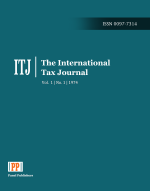From safety nets to springboard: architecting a social and economic security system for an inclusive future
Keywords:
Freebies, Social Enablement, Competitive Welfarism, Life Cycle, Survival openingAbstract
This report provides a comprehensive analysis of social enablement in India, examining its constitutional foundations, economic debates, and practical implementation through national and state-level welfare schemes. It evaluates their socio-economic impact, fiscal sustainability, and role within the political economy, navigating the contentious “freebies” versus welfare debate with a clear analytical framework. The analysis reveals a complex landscape of significance in poverty reduction, improved health and social indicators juxtaposed with persistent challenges of fiscal strain and implementation gaps. The report concludes by offering a strategic roadmap to transform India's fragmented welfare architecture into an integrated, resilient, and empowering system, capable of supporting the nation's ambition to become a developed economy by 2047 with inclusivity and sustainable prosperity.
Downloads
References
1. Ahluwalia, M. S. (2020). Backstage: The story behind India's high growth years. New Delhi: Rupa Publications.
2. Banerjee, A., & Duflo, E. (2011). Poor economics: A radical rethinking of the way to fight global poverty. New York: PublicAffairs.
3. Bhagwati, J., & Panagariya, A. (2013). Why growth matters: How economic growth in India reduced poverty and improved well-being. New York: PublicAffairs.
4. Drèze, J., & Rahul, R. (2025). Poverty and inequality: A short history of MGNREGA—20 years in 10 charts. Ideas for India. https://www.ideasforindia.in/topics/poverty-inequality/a-short-history-of-mnrega-20-years-in-10-charts.html
5. International Journal of Science and Research Archives. (2024, August 16). From vision to reality: Dissecting Ayushman Bharat's role in Indian healthcare.
6. Khera, R. (2024). Impact of Food Security Act on Public Distribution System.
7. Piketty, T. (2015). The economics of inequality. Cambridge, MA: Harvard University Press.
8. Rajan, R. G. (2019). The third pillar: How the markets and the state leave the community behind. New York: Penguin Press.
9. Reddy, A. (2014). The impact of MGNREGA reforms on rural labour market. ICRISAT Report.
10. Sen, A. (1999). Development as freedom. New York: Alfred A. Knopf.
11. Sen, A., & Drèze, J. (2013). An uncertain glory: India and its contradictions. London: Allen Lane.
12. Singh, M., & Yadav, R. (2025). National Food Security Act: A critical analysis. International Journal for Research Trends and Innovation (IJRTI). https://www.ijrti.org/
13. Verma, D., & Panth, J. (2024). Evaluation of state-wise implementation of Ayushman Bharat Pradhan Mantri Jan Arogya Yojana in India. International Journal of Multidisciplinary Research.
Reports / Web Sources
1. Carnegie Endowment for International Peace. (2024). When does welfare win votes in India? https://carnegieendowment.org/
2. Ministry of Statistics and Programme Implementation (MoSPI). (2012). Survey on MGNREGA.
3. Ministry of Statistics and Programme Implementation (MoSPI). (2015–2024). Reports and statistical publications.
4. Ministry of Statistics and Programme Implementation (MoSPI). (2018–2023). Periodic Labour Force Survey (PLFS) reports.
5. NITI Aayog. (2019). Annual reports.
6. NITI Aayog. (2022). Reports on literacy at SATH-E (Sustainable Action for Transforming Human Capital – Education), higher education, and education index 2024.
7. NITI Aayog. (2025). Fiscal health index report.
8. Press Information Bureau (PIB). (2025). On Fiscal Health Index 2025. https://www.pib.gov.in/
9. ResearchGate. (2024). Policy proposals of the BJP and Congress differ from each other? An analysis of election manifestos. https://www.researchgate.net/publication/392838799
10. Reserve Bank of India (RBI). (2016). Handbook of statistics of Indian states.
11. Reserve Bank of India (RBI). (2021). Data for social sector expenditure report on state finances.
12. Reserve Bank of India (RBI). (2024). State finances report 2023–24: Recent dynamics and fiscal capacity of Indian states.
13. Sample Registration System (SRS). (2023). Census India data.
14. Stiglitz, J. (2024). Inequality with a people-centered economy. Keough School of Global Affairs. https://business.columbia.edu/
15. United Nations Development Programme (UNDP). (2023). Urban employment programmes. https://www.undp.org/
News Articles / Media Sources
1. Breaking the cycle: Food Security Act. (2025, January 11). The Economic Times. https://economictimes.indiatimes.com/
2. Deccan Herald. (2025). MGNREGA workers' names deleted between 2022–2024: Govt. https://www.deccanherald.com/
3. Sen, A. (2017). Amartya Sen calls for political engagement to end inequalities in India. The Economic Times.
4. The Live Mint. (2022). Freebies: Uttar Pradesh, Maharashtra are among top 2 states with highest liabilities. https://www.livemint.com/news/india/freebies-uttar-pradesh-maharashtra-are-among-top-2-states-with-highest-liabilities-11660232655860.html
5. The Print. (2022). Not freebies: Tamil Nadu has given India the market-friendly Dravidian welfare model. https://theprint.in/opinion/not-freebies-tamil-nadu-has-given-india-market-the-friendly-dravidian-welfare-model/1101402/
6. The Tribune. (2025, February 15). Let’s talk about rights, not revdis.
7. Times of India. (2018). UP under Ayushman Bharat. https://timesofindia.indiatimes.com/
8. Times of India. (2025). Food Security Act prevented stunting in 1.8 million kids. https://timesofindia.indiatimes.com/
Downloads
Published
How to Cite
Issue
Section
License
Copyright (c) 2025 The International tax journal

This work is licensed under a Creative Commons Attribution-NonCommercial-NoDerivatives 4.0 International License.








